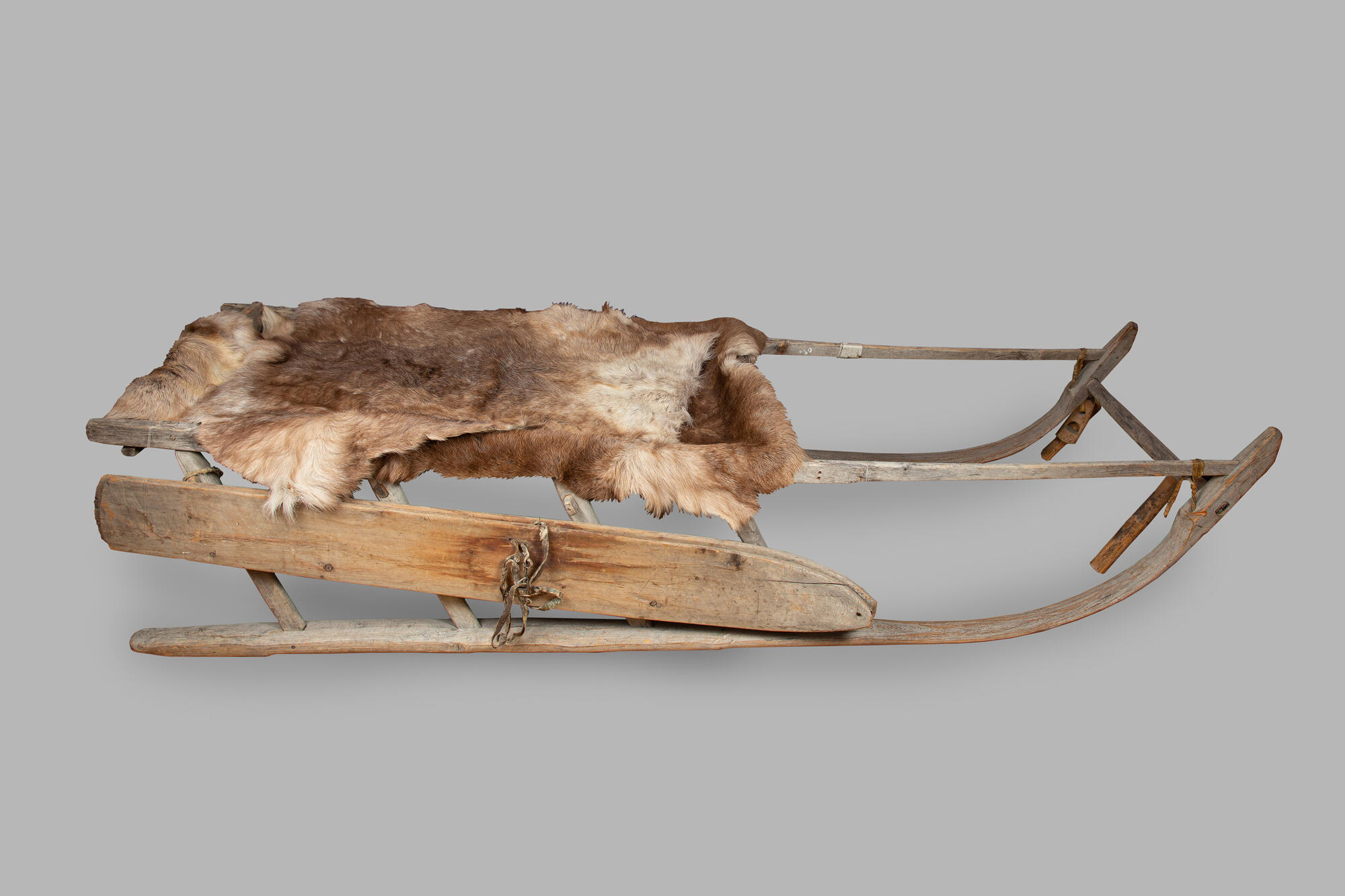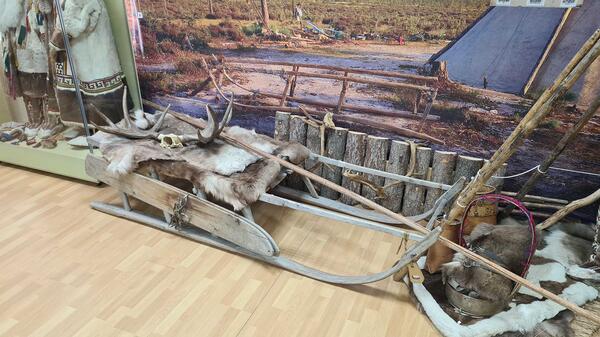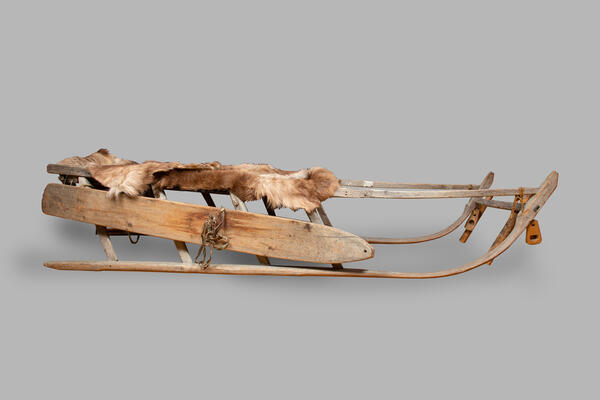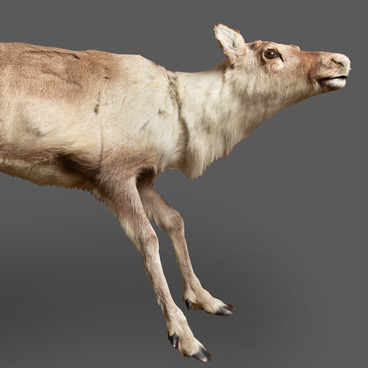Nenets sleds are traditional wooden sledges of northern peoples that are used as the main means of transportation in the tundra. They are pulled by sled dogs and deer. In this way, the Nenets travel hundreds of kilometers all year round — in winter on snow, and in summer on reindeer moss and white lichen. The light and strong sleds have good shock absorption, they are durable and easy to handle: a lone traveler can repair them on his own on the way.
The name of the men’s passenger sled, “neda-lyos”, is associated with the concepts of “gnedalava” — “reindeer run”, “edalo” — “travel light” and “road”. A Nenets boy has his first own sled at the age of seven or eight. Unlike other sleds, “neda-lyos” is distinguished by lightness, speed, maneuverability and versatility. The reindeer herder spends most of his life on a passenger sled: he travels with the herd, hunts, participates in races and gets to neighboring villages.
Sleds vary in size and purpose. Cargo sledges are long, with powerful runners and boxes up to a meter high. Children’s sleds are the size of ordinary iron children’s sleds. Women’s sledges differ from men’s sleds by small borders on both sides — these are made for safety when transporting small children. There are sacred sleds, racing sleds and sleds for transporting the poles of the Nenets dwelling — the chum.
Sledges are made of spruce, larch or birch. There is a shortage of wood on the Yamal Peninsula, so broken sleds are not thrown away, but repaired. The sledge is assembled with the help of a tie-in and fastened with bird cherry vines. Nails and screws are not used; sleds have a simple and reliable design.
The riding sledges are covered on top with a deer skin, on which people sit during the trip. To prevent the skin from slipping, it is tied to the seat with an old lasso or belt. A reindeer herder carries the most necessary things in the sled. A small flat box with tools, an ax, a lasso for catching deer, a hacksaw, a bunch of bone buttons for the harness are kept in front. On the right, a sheathed gun is tied to the sled. All belongings are tied up and covered with a hide so that there is room for the owner himself.
The name of the men’s passenger sled, “neda-lyos”, is associated with the concepts of “gnedalava” — “reindeer run”, “edalo” — “travel light” and “road”. A Nenets boy has his first own sled at the age of seven or eight. Unlike other sleds, “neda-lyos” is distinguished by lightness, speed, maneuverability and versatility. The reindeer herder spends most of his life on a passenger sled: he travels with the herd, hunts, participates in races and gets to neighboring villages.
Sleds vary in size and purpose. Cargo sledges are long, with powerful runners and boxes up to a meter high. Children’s sleds are the size of ordinary iron children’s sleds. Women’s sledges differ from men’s sleds by small borders on both sides — these are made for safety when transporting small children. There are sacred sleds, racing sleds and sleds for transporting the poles of the Nenets dwelling — the chum.
Sledges are made of spruce, larch or birch. There is a shortage of wood on the Yamal Peninsula, so broken sleds are not thrown away, but repaired. The sledge is assembled with the help of a tie-in and fastened with bird cherry vines. Nails and screws are not used; sleds have a simple and reliable design.
The riding sledges are covered on top with a deer skin, on which people sit during the trip. To prevent the skin from slipping, it is tied to the seat with an old lasso or belt. A reindeer herder carries the most necessary things in the sled. A small flat box with tools, an ax, a lasso for catching deer, a hacksaw, a bunch of bone buttons for the harness are kept in front. On the right, a sheathed gun is tied to the sled. All belongings are tied up and covered with a hide so that there is room for the owner himself.




